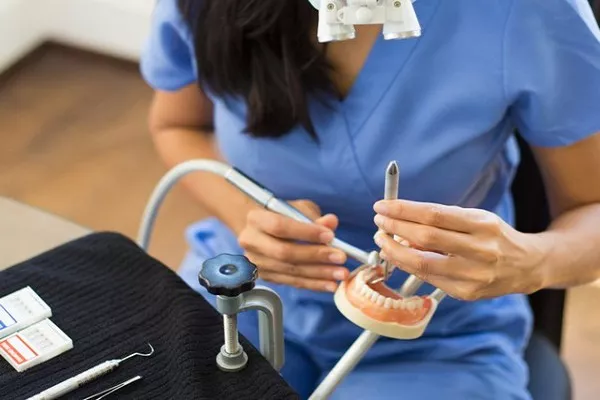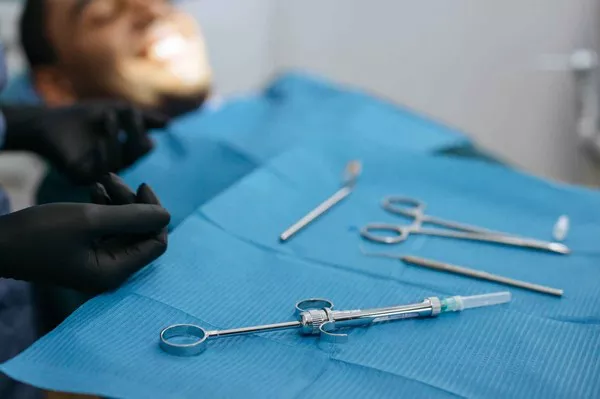In the realm of orthodontics, the utilization of various tools and devices has revolutionized the field, allowing for more precise and effective treatments. Among these tools, the palate expander stands as a remarkable innovation that serves a crucial role in correcting dental and skeletal issues in patients, particularly during their developmental years. This article aims to delve into the intricate world of orthodontics by unraveling the mystery behind palate expanders. By understanding what a palate expander is and how it works, both professionals and patients can gain insight into this essential orthodontic treatment.
Understanding Palate Expanders
A palate expander, also known as a rapid palatal expander (RPE), is an orthodontic device designed to widen the upper jaw’s palate. The upper jaw, or maxilla, is composed of two halves that fuse as an individual grows older. In some cases, the fusion may be incomplete, leading to issues like a narrow palate. This condition can result in various dental and skeletal problems, including overcrowding of teeth, improper bite alignment, breathing difficulties, and even aesthetic concerns.
The Function of a Palate Expander
A narrow palate can result in a range of orthodontic and oral health issues, including overcrowding of teeth, improper bite alignment, breathing difficulties, and aesthetic concerns. Palate expanders are particularly effective when used during a patient’s developmental years, when the bones are more malleable and responsive to mechanical forces. By gradually widening the upper jaw, these devices provide the following benefits:
Addressing Overcrowding: A narrow palate can lead to insufficient space for teeth, resulting in crowded and misaligned dentition. Palate expansion creates additional room, allowing teeth to align more naturally.
Improving Bite Alignment: An unbalanced bite, such as an anterior crossbite or posterior crossbite, can result from a narrow palate. Palate expanders help correct these bite issues by widening the upper jaw, allowing for proper occlusion.
Enhancing Breathing: A constricted palate can contribute to breathing difficulties, as it may impede airflow through the nasal passages. By expanding the palate, the airway space can be improved, potentially alleviating breathing issues.
Promoting Facial Symmetry: A narrow upper jaw can impact facial aesthetics and symmetry. Palate expansion can contribute to a more harmonious facial appearance.
The Mechanism of Action
The process of palate expansion involves a carefully controlled mechanical force applied to the palatal bones. The palate expander device is custom-made to fit the patient’s mouth and is usually anchored to the upper molars using bands or crowns. Activation of the expander is performed by an orthodontist, who uses a special key to turn a screw or other mechanism located at the center of the device. This turning action generates pressure on the palatal bones, creating small gaps between them.
Stimulating Bone Growth
The gaps created by the palate expander trigger the body’s natural response to repair and regenerate bone tissue. Osteoblasts, specialized cells responsible for bone formation, are activated in response to the applied mechanical force. These cells begin to lay down new bone material in the gaps, gradually filling the spaces and increasing the width of the palate. The expansion process is usually carried out in small increments, with the orthodontist making periodic adjustments to ensure controlled and steady progress.
The Process of Expansion
The expansion process occurs in response to the mechanical force applied by the palate expander. As the device is activated, the tension created prompts the body to stimulate osteoblasts—the cells responsible for bone formation—to build new bone in the gap. This gradual bone growth leads to the separation of the two halves of the maxilla, effectively widening the palate. Patients typically undergo a series of adjustments, with each turn of the expander key advancing the expansion by a fraction of a millimeter. The entire process is meticulously monitored by the orthodontist to ensure that the expansion is proceeding as planned.
Indications for Palate Expansion
Palate expanders are recommended for individuals with specific orthodontic and skeletal issues. These may include:
Crossbites: When the upper teeth sit inside the lower teeth upon biting, a crossbite occurs. Palate expansion can help correct this misalignment.
Crowding: A narrow palate often leads to insufficient space for teeth, resulting in overcrowding. Expanding the palate can alleviate this issue, providing adequate room for teeth to align properly.
Breathing Difficulties: A constricted palate can impede proper airflow through the nasal passages, potentially causing breathing difficulties. Palate expansion can help improve nasal breathing.
Impacted Teeth: Palate expanders can create the necessary space for impacted teeth to erupt naturally.
Improper Bite: An unbalanced bite, such as an anterior or posterior crossbite, can be addressed through palate expansion.
The Importance of Timely Intervention
Palate expansion is most effective when performed during a patient’s developmental years, typically before the fusion of the palatal bones is complete. This period is characterized by greater bone flexibility, allowing for easier movement and adjustment. Early intervention can prevent the need for more invasive procedures later in life and can significantly improve the success of orthodontic treatment.
Types of Palate Expanders
Several types of palate expanders are available, each with its own unique design and mode of action. Some common types include:
Traditional Rapid Palatal Expander: This type features a screw that is turned to create the desired separation between the palatal bones. It is affixed to the upper molars using bands or crowns.
Hyrax Expander: The hyrax expander also employs a screw mechanism but is attached using bands that encircle several teeth. It is known for its stability and precise control.
Removable Palate Expander: Unlike the fixed expanders, this version can be removed by the patient. It is often used for more minor corrections and adjustments.
The Orthodontist’s Role
The success of palate expansion hinges on the expertise of an orthodontist. These professionals undergo extensive training to assess patients’ conditions, formulate appropriate treatment plans, and execute precise adjustments. Regular appointments are essential during the expansion phase, as the orthodontist monitors progress and makes necessary adjustments to ensure optimal results.
Post-Expansion Care
After the desired palate width has been achieved, a period of stabilization is necessary to allow the new bone to consolidate. This phase may involve wearing a retainer, which helps maintain the achieved width and prevents regression.
Conclusion
In the realm of orthodontics, the palate expander plays a pivotal role in addressing a myriad of dental and skeletal issues associated with a narrow palate. By gradually widening the upper jaw, this innovative device provides patients with improved dental alignment, proper bite function, and enhanced overall well-being. As a testament to the power of orthodontic interventions, the palate expander stands as a beacon of hope, guiding patients toward healthier and more confident smiles. Through careful assessment, expert execution, and diligent aftercare, the journey of palate expansion exemplifies the transformative potential of modern orthodontic techniques.
Related Topics:
































